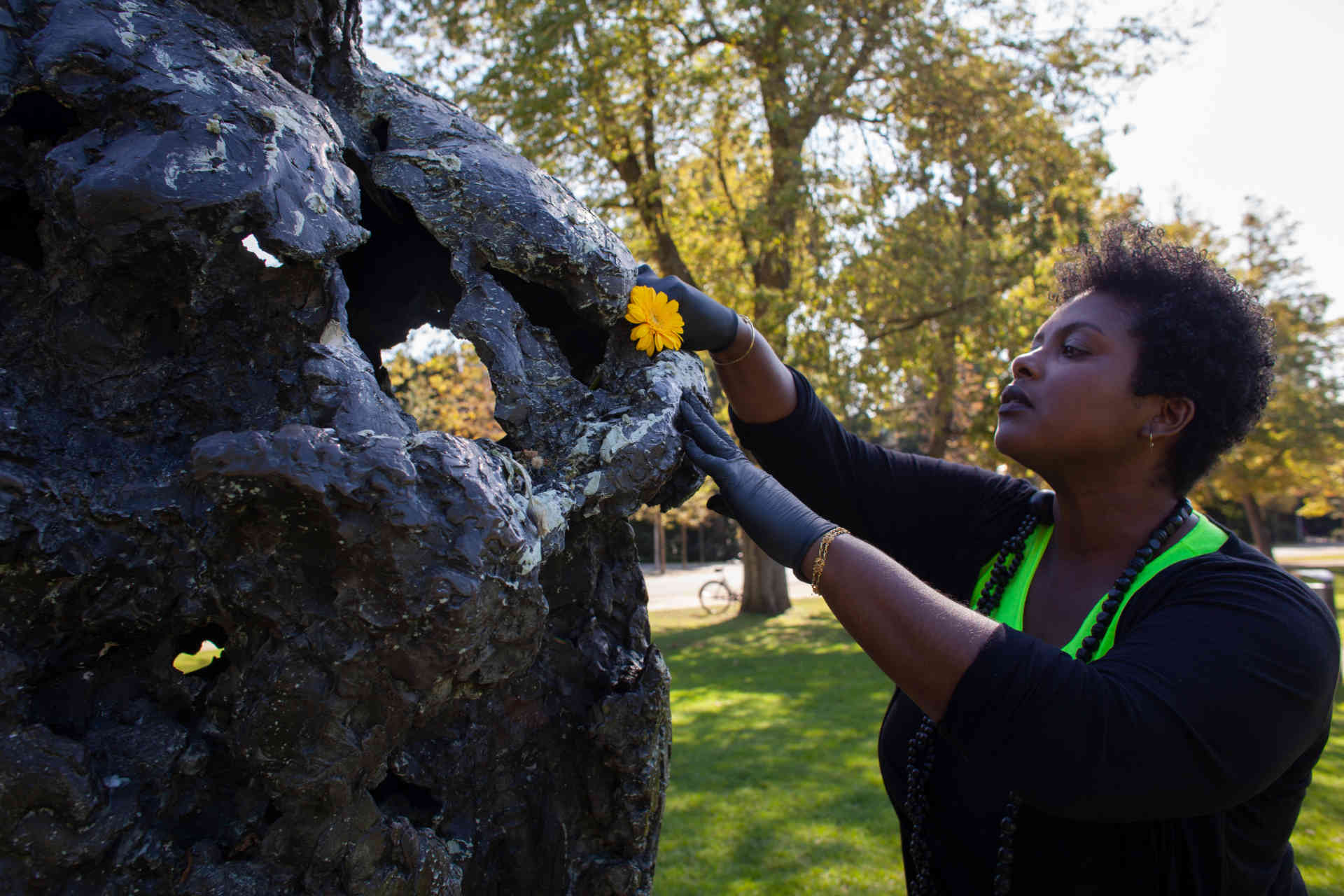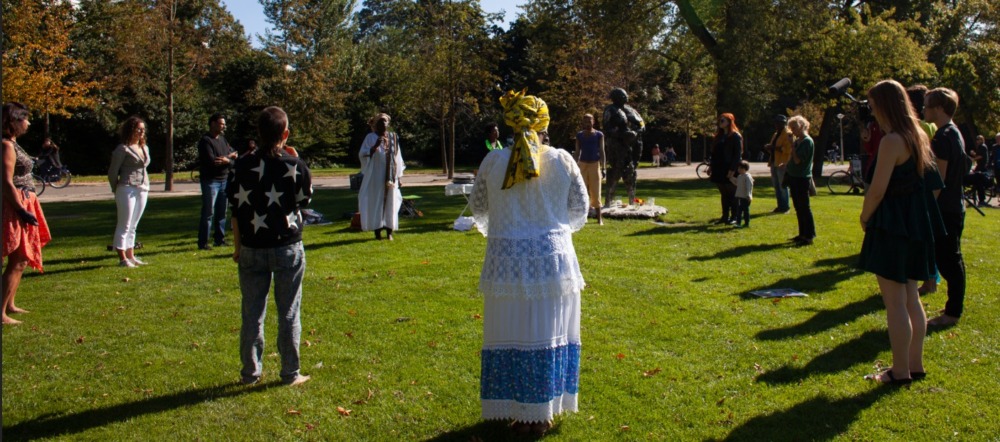I’ve been a Storyteller my whole life. I love to communicate. My second passion has everything to do with taste, to be more specific the taste of happiness. Marketing Communications and Account management have always been my work fields since receiving my Bachelor’s degree, in Banking and. As from 2008 I’ve been attending events in Art and Culture and started to build a network of professionals and artists.
As from 2010 I felt the urge to play a part of telling inspiring stories from African diaspora people, which are of meaning for all of us. Midst 2016 I was invited to the studio of the sculptor Nelson Carrilho in Amsterdam. In bits and pieces I learned more about Carrilho’s craft and vision. The meaning and layerd reasons regarding the artwork Mama Baranka / Moeder Rots / Kerwin Monument, 1983 Vondelpark and the Dragers van Verre / Carriers from Afar, Westerpark 1989, intrigued me. The fact that so many important African Rooted stories were not at all known by a broader audience triggered me. Carrilho wished to connect new voices, especially youth in the Netherlands and abroad, to these art pieces. As from 2017 – until currently I realised different gatherings and dialogue venues in Carrilho’s studio in the Jordaan, as well as outdoors around the sculptures.’

Photo by Anna Zamanipoor, 2020
Mama Baranka literally means ‘Mother Rock’ in Papiamento, a Creole language spoken in the ABC islands. It relates to the universal symbol of Mother Earth. Nelson Carrilho was commissioned in 1984 to produce an image as homage to Kerwin Lucas Duinmeijer, a 15 years-old Dutch teenager of Antillean descent who was murdered in an act of senseless violence against his skin color. Instead of producing an image of the boy, Nelson Carrilho decided to use the image of Mother Earth to spread a more universal message of vigilance, steadfastness and eternity instead of a protest against racism. Mama Baranka takes place in the Vondelpark in Amsterdam.

Photo by Anna Zamanipoor, 2020
Mama Baranka is standing with her feet in the soil. She carries darkness and solidness. The cracks are visible in the Mama Baranka statue in the openings of the bronze. They represent pain, but one also can see light coming through them. Since 2019 I started an inner dialogue with myself through bringing flowers to the Mama Baranka in the Vondelpark. My ritual brings also to life a dialogue with the people passing by and reaches to reflections around interculturalism, race and personal grounding. My experience of self mental healing through connecting to Mother Earth is a strong vector in my life.
The project EARTH(ING) in collaboration with the Museum of Edible Earth investigated the monument of Mama Baranka as a place of power, connecting to it through a participatory, sometimes ceremonial, performance. The earth was placed in various forms around Mama Baranka, as well as on the sculpture itself, and played the role of an offering and a connecting tool with the audience. By bringing earth to the sculpture the visitors intensified its power and generated a wave of grounding for the people around. The focus was ‘earthing’ or ‘grounding’ as a healing tool during Corona times. Like flowers, as humans we come to life, we blossom, and we go back to earth.

Photo by Anna Zamanipoor, 2020

